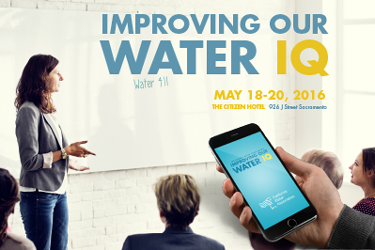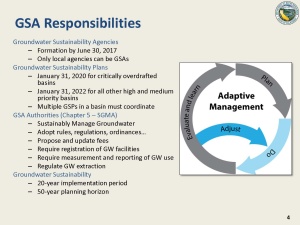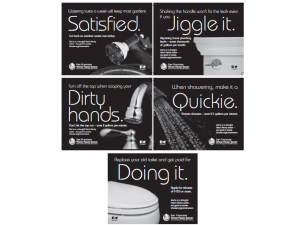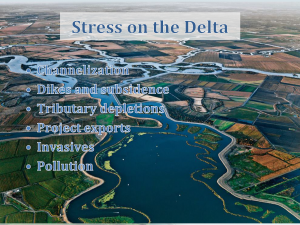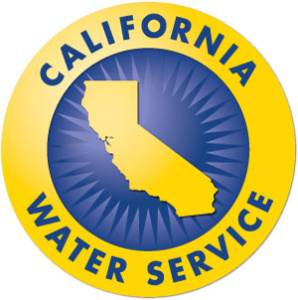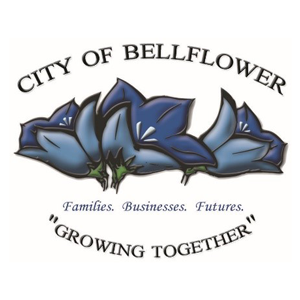The California Water Association’s (CWA) 2016 Spring Conference in Sacramento on May 19 focused on the theme “Improving Our Water IQ.” CWA 2nd Vice President Keith Switzer, Vice President, Golden State Water Company (GSWC), welcomed the attendees and provided an overview of the day’s agenda. Noting that urban water users have reduced water consumption on average by approximately 24 percent, Switzer said, “Californians’ water IQ is worth celebrating.”
Senator Fran Pavley, Chair of the Senate National Resources and Water Committee (Committee), kicked off the conference with a Capitol update. Emphasizing that water is always the most controversial and political subject in the Capitol, Pavley outlined pending legislation that could impact the water industry. The bills include: SB 1263 (Wieckowski and Pavley) targeted at small, undercapitalized water systems that cannot provide safe drinking water; SB 1317 (Wolk) related to groundwater extraction; AB 1755 (Dodd) enacting the Open and Transparent Water Data Act; AB 2304 (Levine) establishing the California Water Market Exchange; and AB 2594 (Gordon) authorizing a public entity to capture storm water. Pavley thanked CWA for supporting the Sustainable Groundwater Management Act (SGMA) and her subsequent clean-up bill SB 13. Commenting that one in six Californians get their water from investor-owned water utilities (IOUs), Pavley encouraged CWA members to connect with Dennis O’Connor, Principal Consultant on the Committee, when her term as chair ends. She concluded on a cautionary note that in this fifth year of record drought, it’s not time to go back to our normal ways.
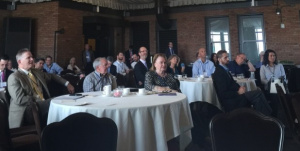
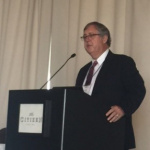
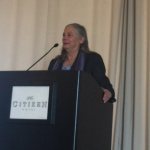
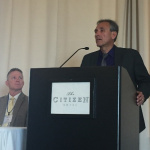
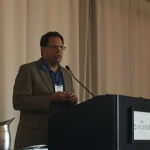
CWA President Greg Milleman, Director of Field Administration and Finance, California Water Service (Cal Water), moderated the first panel on “SGMA, GSAs and IOUs – One Year Later.” Panelists included Dave Ceppos, Associate Director, Center for Collaborative Policy; David Gutierrez, Program Manager, Groundwater Sustainability Program, Department of Water Resources; and John Woodling, Executive Director, Regional Water Authority. The panel focused on the requirements and challenges of forming Groundwater Sustainability Agencies (GSAs) and the consequences if the June 30, 2017, deadline for forming locally controlled GSAs is not met.
CWA Executive Director Jack Hawks led a panel on “Improving Our Water IQ.” He was joined by Robb Barnitt, Founder and Chief Executive Officer, DropCountr; Christine Boyle, Founder and Chief Executive Officer, Valor Water Analytics; and Peter Yolles, Founder and Chief Policy Officer, WaterSmart. Barnitt detailed DropCountr’s digital technology for water conservation, which helps customers track their water use and compare it to similar households. In his February Huffington Post article, Barnitt noted that Californians’ awareness of water conservation is admirable. Boyle’s company analyzes meter data that can be leveraged into value for utilities and their customers. Yolles’ WaterSmart platform uses utility meter data to improve communications with customers and help them conserve water as well as providing the utilities with billing data and water-use trends. By proactively communicating with customers and providing 24/7 access to information about their water use through mobile and online platforms, IOUs can improve their customers’ water IQ.
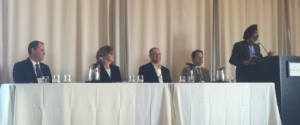
L-R: Tim Treloar, Cal Water, Carol Thomas-Keefer, Liberty Utilities (Apple Valley Ranchos Water), Rich Svindland, CAW, Andy Gere, SJWC, and Rami Kahlon, CPUC
The panel on “Water IOUs – Doing Their Part” was moderated by Rami Kahlon, Director, California Public Utilities Commission (CPUC) Division of Water and Audits. The panelists included Andy Gere, President and Chief Operating Officer, San Jose Water Company (SJWC); Rich Svindland, Vice President of Operations, California American Water (CAW); Carol Thomas-Keefer, Superintendent of Operations, Liberty Utilities Apple Valley; and Tim Treloar, Vice President of Operations and Water Quality, Cal Water. The panelists discussed projects their IOUs have undertaken to provide customers with safe, reliable and high-quality water. SJWC modernized its water treatment plant in Montevina, while CAW continues working on the pre-construction and permitting process for the Monterey Peninsula Water Supply project, which will include a desalination plant, groundwater replenishment and aquifer storage and recovery. Treloar provided an overview of how Cal Water met the new chromium-6 standard in its service areas, and Thomas-Keefer discussed the challenges associated with Liberty Utilities’ acquisition and improvement of the Yermo Water System, which consolidated three small water companies that had long been neglected and were non-compliant.
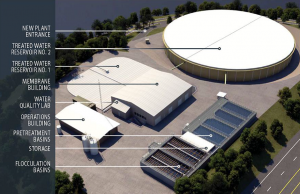
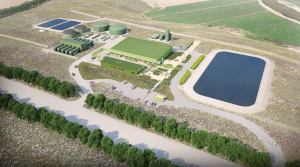
Frances Spivy-Weber, Vice Chair, State Water Resources Control Board (SWRCB), spoke on “Urban Water Conservation Policy – Today and Tomorrow” during her luncheon presentation. Given Californians do not have as much water as they’re used to using, Spivy-Weber said they should be thinking about the “new normal.” She discussed the Emergency Regulation adopted by the SWRCB on May 18, 2016, which will remain in effect through January 2017 (see article in the Legislative and Regulatory Update section) and how the SWRCB is focusing on long-term strategies. She encouraged IOUs to take the lead in imitating energy companies that have moved from selling kilowatt hours to selling a service. This could include establishing ways of helping customers conserve, supplying them with recycled, storm and/or gray water and educating them on the costs associated with conveying, treating and distributing water. When asked about water suppliers that might self-certify at zero under the Emergency Regulation’s new “stress-test approach,” Spivy-Weber said the SWRCB will look carefully at the calculations to verify their accuracy.
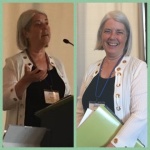
Christine Kohn, Principal, IN Communications, moderated a panel on “Keeping Drought Communications Fresh – Beating Drought Fatigue,” which included panelists Evan Jacobs, External Affairs and Drought Response Manager, CAW; Alison Kastama, Manager of Public Affairs and Community Outreach, East Bay Municipal Utility District (EBMUD); Yvonne Kingman, Corporate Communications Manager, Cal Water; and John Tang, Vice President of Government Relations and Corporate Communications, SJWC. They discussed various ways of communicating about conservation to continue encouraging customers to be water wise.
In addition to traditional communication methods, such as direct mail, print, radio and television ads, bill inserts and text messages, CAW uses email, online ads, a mobile app where customers can send photos of water waste and ads at movie theaters. CAW also has doubled down on direct contact with customers through walk-and-talks, community events and a very successful “Mulch Madness” event. SJWC has moved away from text-based communications to infographics and videos to explain topics such as ratemaking, the value of tap water and what it takes to deliver water. The IOU also is changing its focus from drought to driving home efficiency by targeting the highest users in all classes, reaching out to youth and leveraging technology and social media. In 2014-15,
EBMUD reached out to customers through community meetings, automated calls, social media, billboards, bus shelter ads, a bimonthly newsletter and more than 200 events and workshops. With a redesigned website, EBMUD offers an online tool allowing customers to estimate their water use. The district also partnered with 41 hardware stores during Fix-a-Leak Week and makes it a point to thank customers for conserving water.
Cal Water has employed direct mail, fact sheets and 25 public meetings to educate customers about conservation. The meetings, one of which drew 800 attendees, provided opportunities to connect with and thank customers. Cal Water also rewarded customers who met their water budgets with a drawing for bill credits as well as gift cards for customers who stayed below their water budgets during the winter months. The IOU conducted conservation events featuring food, fun for kids and educational opportunities in East Los Angeles and Stockton with two more in the planning stages. And Cal Water created videos of “local conservation heroes.” The panel concluded with a discussion on the next phase of communicating with customers as IOUs self-certify their water supplies and demands under the new Emergency Regulation.
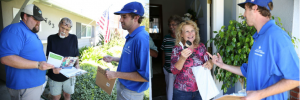
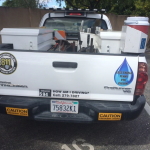
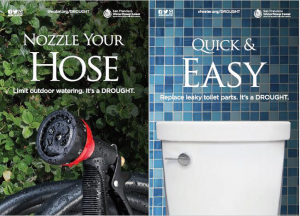
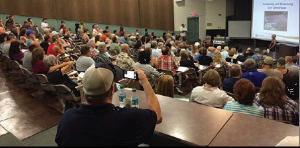
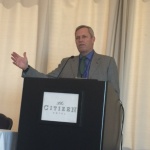
Michael Patrick George, Delta Watermaster, SWRCB, Delta Stewardship Council, addressed the topic of “Improving Our Delta IQ.” After explaining the history and current state of the Sacramento–San Joaquin River Delta, George talked about stressors, which include channelization, dikes and subsidence, tributary depletions, project exports, invasive species and pollution. He noted the Delta drains 60 percent of California’s land mass and misusing it as a temporary diversion facility is unsustainable and needs to be addressed.
The conference concluded with “Is the 2016 Legislative Session Improving Our Water IQ?” panel moderated by Jennifer Capitolo, Senior Policy Advisor, Nossaman LLP. Panelists included Danielle Blacet, Director for Water, California Municipal Utilities Association (CMUA); Kathleen Cole, Executive Legislative Representative, Metropolitan Water District of Southern California (MWDSC); and Wendy Ridderbusch, Director of State Relations, Association of California Water Agencies (ACWA). The panelists discussed several water-related bills currently moving through the California Legislature.
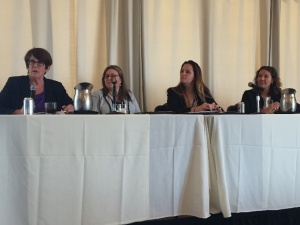
SAVE THE DATE
California Water Association’s 75th Annual Conference
November 3, 2016 – Monterey Plaza Hotel, Monterey, CA


